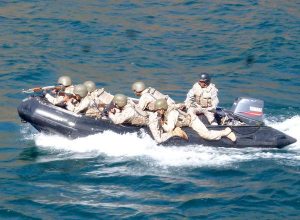Bolivia and Peru have signed a joint agreement to combat drug trafficking along their shared frontier. However, it is unlikely that their proposed strategy will be enough to stop the heavy flow of cocaine across their borders.
As part of the plan, Bolivian and Peruvian naval units will use satellites to monitor aerial drug trafficking over Lake Titicaca, which is located between the two countries, reported El Diario. The navies of the two countries will also coordinate anti-drug operations on the lake to combat maritime drug trafficking, according to La Razon.
The announcement comes just over a week after Bolivia’s Vice Minister of Defense Felipe Caceres said that monitoring drug trafficking on the lake was “not humanly possible” and said that trafficking from the Peruvian to Bolivian side of the lake had increased in recent months.
As part of the accord, the two countries have agreed to begin joint coca eradication efforts in 2015 in border areas as well as in Peru’s triple-river valley region, an infamous coca-growing region known by its Spanish acronym VRAEM.
InSight Crime Analysis
While the agreement is indication that Bolivia and Peru are getting serious about controlling drug trafficking along their shared border, it is doubtful that the new strategy will have much impact in closing the cocaine air bridge connecting Peru to Brazil, via Bolivia. The air bridge is hugely important because it links the world’s biggest cocaine producer, Peru, to the world’s second largest consumer market, Brazil. In June, a Peruvian security expert told InSight Crime that an estimated 90 percent of the 200 tons of cocaine annually trafficked out of the VRAEM is moved by air, of which just 2 percent is seized by authorities.
SEE ALSO: Peru News and Profiles
Neither Peru nor Bolivia have radars to monitor aerial drug trafficking, which has significantly hampered interdiction efforts in the border region. While installing satellites is an improvement over zero aerial monitoring, the satellites are not as effective as radars, and it remains unclear how useful they will be in detecting drug planes.
Peru has taken steps to combat aerial drug trafficking by blowing up narco airstrips. However, drug traffickers can quickly and cheaply rebuild them with the help of locals.

